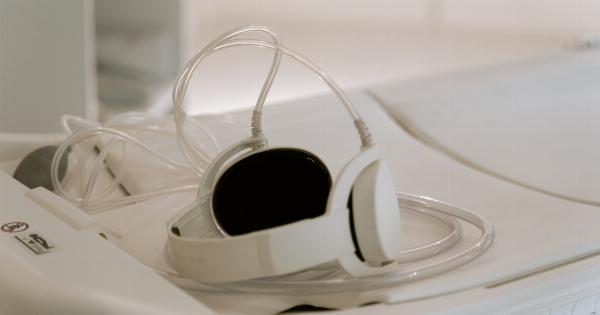During pregnancy, many women experience changes in their bodies that may make them consider alternative methods of hair removal.
Waxing is a popular choice for many expecting mothers as it provides long-lasting results and avoids some of the potential risks associated with other hair removal techniques. However, it is important to be aware of certain dos and don’ts when it comes to waxing during pregnancy in order to ensure a safe and comfortable experience.
The Dos of Waxing During Pregnancy
1. Consult with Your Healthcare Provider: Before you start waxing during pregnancy, it is advisable to consult with your healthcare provider.
They can provide personalized advice based on your specific health condition and any potential risks that may apply to you.
2. Choose a Professional Waxing Salon: Opt for a reputable and professional waxing salon that adheres to strict hygiene practices.
Ensure that the estheticians are experienced in providing services to pregnant women, as they will be more knowledgeable about the necessary precautions and modifications required during the process.
3. Inform the Esthetician about Your Pregnancy: It is essential to inform the esthetician about your pregnancy before the waxing session begins.
This will allow them to adjust their techniques and choose suitable waxes that are safe for expecting mothers.
4. Test a Small Patch of Skin: Before getting a full wax done, test a small patch of skin using the chosen wax to check for any adverse reactions or increased sensitivity due to pregnancy hormones.
This will help you avoid any potential complications during the actual waxing session.
5. Opt for Warm Wax: Warm wax is generally considered safer during pregnancy compared to hot wax, as it reduces the risk of burns or skin damage. Ensure that the wax is comfortably warm and not overly hot.
6. Consider Sensitive Areas Carefully: The sensitivity of your skin may increase during pregnancy, so consider removing wax from sensitive areas, such as the bikini line or the nipples, with extra caution.
Your esthetician can use a gentler technique or wax specially formulated for sensitive skin.
7. Take Breaks if Desired: If you feel uncomfortable or experience any pain during the waxing session, don’t hesitate to ask for breaks. Your comfort and well-being should always be a priority, and taking breaks can help reduce any discomfort.
8. Maintain Hygiene and Skincare: After the waxing session, ensure proper hygiene and skincare.
Cleanse your skin gently with mild, fragrance-free products and apply a soothing, non-irritating moisturizer to calm the skin and minimize any potential redness or irritation.
9. Stay Hydrated: Drink plenty of water before and after the waxing session to keep your body hydrated. Hydration promotes healthy, supple skin and can help minimize any discomfort or irritation.
10. Observe Your Skin’s Reaction: After the waxing session, monitor your skin for any unusual reactions such as excessive redness, rash, or itchiness. If you notice anything concerning, contact your healthcare provider for guidance.
The Don’ts of Waxing During Pregnancy
1. Avoid Waxing if You Have Certain Skin Conditions: If you have certain skin conditions such as psoriasis, eczema, or dermatitis, it is best to avoid waxing during pregnancy.
These conditions can make your skin more sensitive and prone to damage or infection.
2. Skip Waxing if You Have Varicose Veins: Varicose veins are common during pregnancy and waxing can irritate or damage them further. It is recommended to avoid waxing in areas with visible varicose veins to prevent discomfort or complications.
3. Say No to DIY Waxing Kits: While it may be tempting to save money by using at-home waxing kits, it is generally best to avoid them during pregnancy.
DIY kits may not provide the same level of hygiene, expertise, and safety standards as a professional waxing salon.
4. Steer Clear of Chemical Peels or Exfoliating Products: Avoid using chemical peels or exfoliating products on the waxed areas for at least 24-48 hours after the session.
These products can irritate the skin, especially when it is already more sensitive during pregnancy.
5. Don’t Wax Too Close to Your Due Date: As you approach your due date, it is recommended to avoid waxing.
The hormonal changes occurring near the end of pregnancy can make your skin even more sensitive and increase the risk of complications or discomfort during waxing.
6.
Skip Waxing if You Have an Increased Risk of Preterm Labor: If you have an increased risk of preterm labor or have been advised by your healthcare provider to avoid activities that could potentially trigger premature labor, it is best to abstain from waxing.
7. Avoid Overheating: Waxing itself can cause a temporary increase in body temperature, so it is important to avoid additional sources of heat immediately after the session.
Avoid hot tubs, saunas, or excessive sun exposure, as overheating can potentially harm the developing baby.
8. Don’t Ignore Any Discomfort: If you experience excessive pain, discomfort, or notice any unusual reactions or symptoms after waxing, it is crucial to seek medical advice.
Your healthcare provider can assess the situation and provide appropriate recommendations.
9. Say No to Waxing if You Have Open Wounds or Infections: If you have open wounds, lesions, or any signs of infection on the intended waxing area, it is essential to avoid waxing until these conditions have healed completely.
Waxing can aggravate the problem and increase the risk of complications.
10. Avoid Harsh Chemicals in Skincare Products: During pregnancy, it is advisable to avoid skincare products that contain harsh chemicals, fragrances, or artificial additives.
Opt for gentle and natural skincare options that are safe for both you and your baby.





























